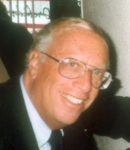
 JERUSALEM –Many people think that the Oral Torah was given to Moses on Mount Sinai. Many rabbis preach this view despite it being untrue to encourage Jews to obey the Oral Torah teachings believing that God ordered them to do so. Actually, the Oral Torah was developed by the Pharisees and later rabbis. The Pharisees made these adaptations before 70 CE when the rabbinical period began, and the rabbis continued the practice, which created rabbinical Judaism. An excellent source showing the development of Oral Torah is the three-part series by Rabbi Binyamin Lau, The Sages. Here is what I wrote in my Mysteries of Judaism I book.
JERUSALEM –Many people think that the Oral Torah was given to Moses on Mount Sinai. Many rabbis preach this view despite it being untrue to encourage Jews to obey the Oral Torah teachings believing that God ordered them to do so. Actually, the Oral Torah was developed by the Pharisees and later rabbis. The Pharisees made these adaptations before 70 CE when the rabbinical period began, and the rabbis continued the practice, which created rabbinical Judaism. An excellent source showing the development of Oral Torah is the three-part series by Rabbi Binyamin Lau, The Sages. Here is what I wrote in my Mysteries of Judaism I book.
Scholarly and open-minded rabbinical view
The general scholarly and rabbinical view is that the Oral Torah blossomed during the Second Temple period, when Judeans, as Jews were called at that time, who had returned from the Babylonian exile were faced with new problems that the Torah did not address and others that were addressed but needed updating to fit the situations they found. The Chassidic Rabbi Tzadok HaKohen Rabinowitz of Lublin (1823–1900) wrote, in Machshavot Charutz (Sharp Thoughts) 139, that the Oral Torah burst into full bloom around 150 BCE, when Jews began to integrate scientific findings of nature and logic into their understanding of the Torah. (Others give the approximate date 330 BCE when Jews came into contact with Greeks). He felt that the Oral Torah was used extensively after the last prophets died when it was no longer possible to learn proper behavior from God, and Jews had to rely on their interpretation of the Torah. “And although (the Oral Torah) was not evident (in the Written Torah) it revealed (the Torah’s goal).”
An earlier date
But the Oral Torah did not begin at this time. It only blossomed at this time. Rabbi Tzadok states In Peri Tzadik (Righteous Product 21): Deuteronomy 1:5’s “Moses began to explain this Torah” reveals that “Deuteronomy is Moses’ version (of past events). It is the beginning of the Oral Law.” This, continued Rabbi Tzadok in Maamar Kedushat Shabbat (The Holiness of Shabbat 7), explains why the version of the Decalogue in Deuteronomy 5 is different than in Exodus 20: “She’amar Moshe mipi atzmo, (Moses said these laws on his authority).”
“Even the many other statements by Moses contained in Deuteronomy that do not indicate they were said by God are also Oral Torah developed by Moses … just as the Oral Torah that the (later) sages of Israel said on their authority.” (Many traditionally-minded people who accept Rabbi Tzadok’s view say that God saw what Moses wrote and told him to incorporate it into the Torah.)
Rabbi Tzadok noted that events narrated in the four earlier Torah books ended during the second year after the Exodus. Moses began his Deuteronomy speeches thirty-eight years later when he addressed a new generation, people who would shortly enter Canaan and face radically new problems that required new laws and innovations and interpretations of existing laws. Deuteronomy is this new interpretation, one fitting landowners rather than desert nomads, a society comprised of rich and poor, unlike the desert wanderers who were all impoverished. This explains the many differences between Deuteronomy laws and those in former Torah books. One shouldn’t try to reconcile the two versions because they are purposely different.
Another rabbinical view
Rabbi Naftali Zvi Yehuda Berlin, known as Netziv (1816–1893) agreed. In Ha’emek Davar (The Depth of the Torah) on Deuteronomy 5:1, he interpreted Deuteronomy 5:1’s “Moses called all Israel and said to them: ‘Hear Israel the chukim and mishpatim that I am speaking in your ears today, learn and observe them’ … chukim are the principles … how to interpret the Torah … mishpatim are laws derived from these principles, new laws. Moses taught Israel (how to develop Oral Torah) by showing them principles and the laws that he derived from them. And they understood how they could also do the same in future generations.”
Netziv went further. He states that the principles of interpretation also change. During the first century CE, for example, Hillel listed seven principles, in the second century Rabbi Ishmael used thirteen in Tosephta Sanhedrin 7:5, “This is because new principles (are needed) in every generation.”
Summary
In short, Judaism today is radically different than Torah Judaism because the rabbis found it necessary to adapt Torah laws. These adaptations, called Oral Torah, began as early as the time of Moses and blossomed during the middle of the second temple period.
*
Rabbi Dr. Israel Drazin is a retired U.S. Army brigadier general and the author of more than 50 books.